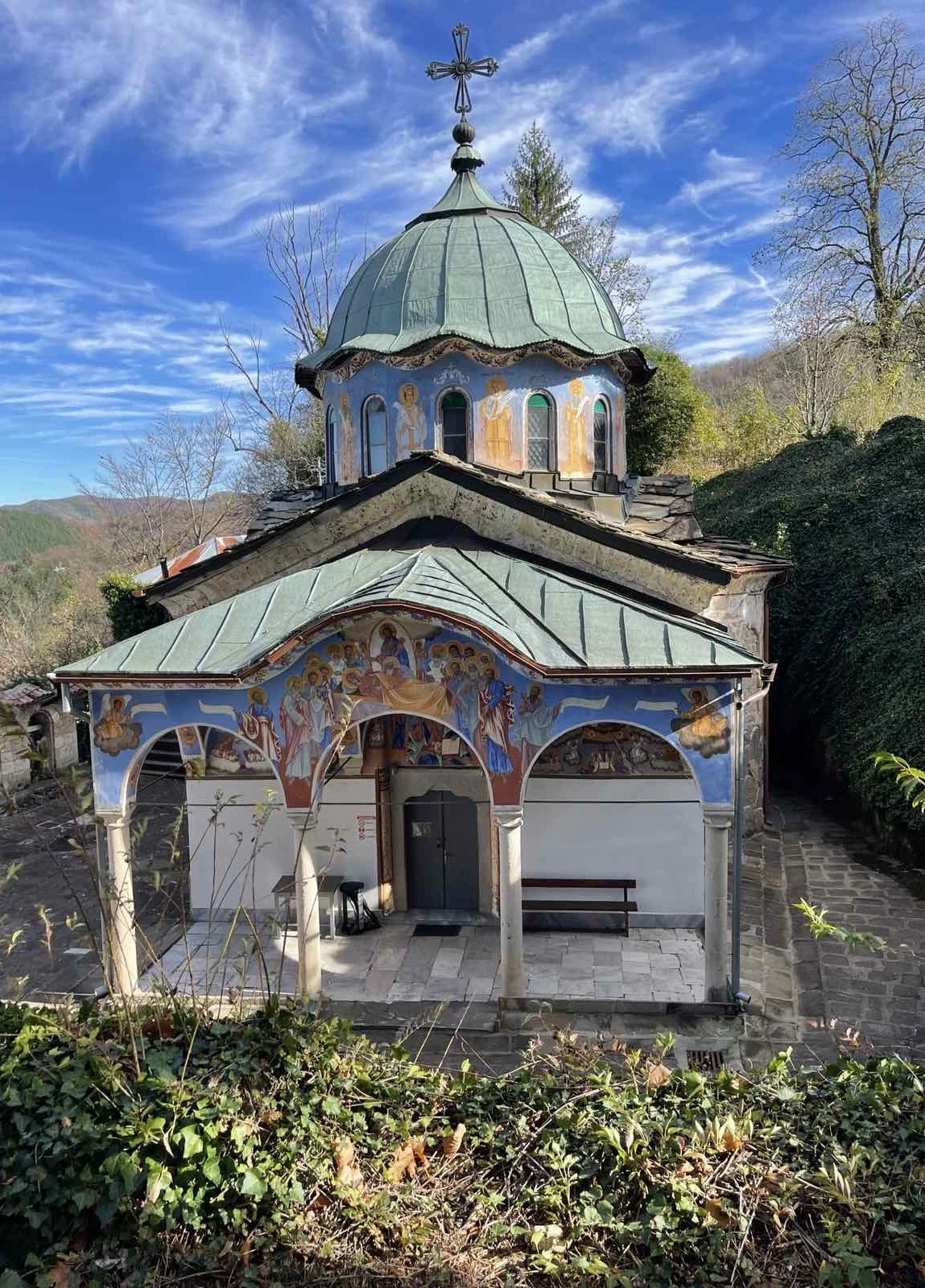To enter a specific gallery, click either on the blue colored words to the description or on the photo to the side of the text.
Thank you for being with us!
On the territory of the country there are many churches and temples, preserved since Byzantine times. The more modern churches and monasteries also impress with their architectural plan and interior. Historically, in 864, during the reign of Tsar Boris I Michael, Bulgaria adopted Christianity as its official religion, and from then until today Eastern Orthodoxy is practiced in the country.
Be with us to admire some of the beautiful holy and spiritual centers of Bulgaria!
# 1 The Sunken Church
Church "St. Ivan Rilski" near the reservoir "Zhrebchevo", is also known as the "Sunken chruch". It is located in the village of Zapalnia wich was submerged in 1965 during the construction of the dam. The area is extremely picturesque and accessible by car. The best time to visit is summer.
Note that in the spring the church is partially submerged due to the heavy rainfall and melting snow!
# 2 Ustrem Monastery "Holy Trinity"
The monastery is an active women's monastery and is located 20 km from the town of Elhovo. It is assumed that it was founded during the Second Bulgarian State in the period 11th - 12th century. It was declared a cultural monument, and the lands around it a natural landmark. In the 18th - 19th centuries, the monastery was a refuge for outlaws (protectors of the Bulgarians against Ottoman slavery) such as Indje Voivode, Kara Kolyo, Valchan Voivode, Kara Dobri and others. That is where the other name of the monastery comes from - "Haidushki". An interesting fact is that under the altar of the church in the monastery is a hiding place for outlaws.
Not far from the monastery is a cave, which is reached by a narrow and sometimes steep path. It was also used as a hideout for outlaws.
# 3 Sokol monastery "Assumption of the Virgin"
The Sokol Monastery is located in the "Sokolova Cave" area near the town of Gabrovo along the upper reaches of the Yantra River. It was founded in 1833 by Joseph Sokolski. To date, it is an active women's monastery, and from its creation until before 1959, it was a male monastery. During the Russo-Turkish War of Liberation (1877-1878) it was a military hospital, and before that, Vasil Levski (the Bulgarian Apostle of Freedom) took refuge here.The monastery has a museum - a small exhibition dedicated to the national liberation struggle against Ottoman slavery.Legend has it that in memory of fallen Chetniks, the fountain with eight spouts in the courtyard of the spiritual abode was built by the famous Bulgarian craftsman Kolyu Ficheto.
Interesting: Near the monastery, you can visit the open-air ethnographic museum "Etara" and experience the Bulgarian way of life, culture and craftsmanship.






